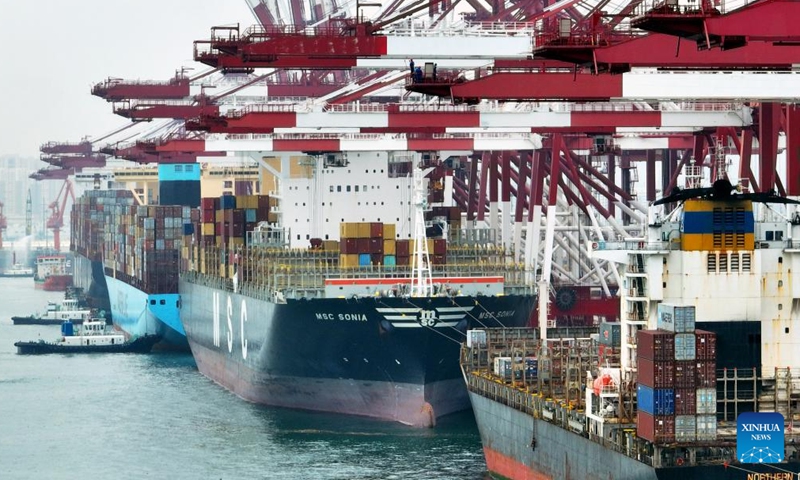LAUNCESTON, Australia, March 4 (Reuters) – In stark contrast to the ongoing weakness in China’s key manufacturing index, the imports of key commodities by the world’s second-biggest economy are roaring ahead. China’s imports of crude oil, liquefied natural gas (LNG), coal and iron ore were all stronger in the first two months of 2024 than for the same period last year, according to data from commodity analysts Kpler and LSEG Oil Research.
Yet, though robust commodity imports appear at first glance to be out of alignment with soft property construction and manufacturing data, they can be reconciled when market dynamics such as stockpiling and price moves are taken into account.
Crude oil imports were 11.73 million barrels per day (bpd) in February, up from 11.31 million bpd in January, according to LSEG data. Over the first two months of the year, LSEG estimates China’s oil arrivals at 11.51 million bpd, which is 1.07 million bpd higher than the 10.44 million bpd official customs figure from January and February last year.
China combines import data for January and February into a single release to mitigate the impact of the Lunar New Year holidays, and the official customs numbers for the first two months of 2024 are expected on March 7.
China’s imports of LNG were 5.7 million metric tons in February, down from January’s 7.82 million, according to Kpler. However, the combined 13.52 million tons for the first two months of this year was 22.5% above the 11.04 million tons for the same period last year.
Imports of iron ore were estimated by Kpler at 101.5 million tons in February, down from 113.0 million in January, which was the second-highest in Kpler data going back to 2017. The combined 215.5 million tons for the January-February period was 4.6% higher than the 206.1 million tons for the same months in 2023.
Imports of all grades of coal were also robust in the first two months of this year, with Kpler estimating seaborne arrivals of 28.4 million tons in February and 34.0 million in January, for a total of 62.4 million. This was 28.1% higher than the 48.7 million tons of seaborne arrivals in the first two months of 2023.
The strength in imports of major commodities appears to be at odds with the ongoing run of soft outcomes in China’s official Purchasing Managers’ Index (PMI). The PMI shrank for a fifth month in February, coming in at 49.1 points, down from 49.2 in January, and staying below the 50-level that separates growth from contraction.
While some of the weakness may have been caused by factories closing for the week-long Lunar New Year holidays, the PMI data indicates that China’s economy is at best spluttering along. This makes it more likely that further stimulus measures are likely to be adopted, with the focus on this week’s meeting of parliament. Whether any new initiatives will be enough to rouse China’s economy remains to be seen, but the recent track record of modest steps suggest something bolder than what is likely to eventuate will be needed.

STRONG COMMODITIES, WEAK ECONOMY?
The question is whether China’s strong commodity imports can be reconciled with the evident weakness seen in key sectors of the economy, such as residential housing construction and manufacturing. Each commodity has its own market dynamics and the robust crude imports can be viewed through the prism of lower oil prices when cargoes would have been arranged, and the early release of import quotas for most refiners.
Global benchmark Brent crude futures were in a downtrend from October to mid-December, reaching a low of $72.29 a barrel on Dec. 13. The lower prices, coupled with the 60% increase in the first tranche of import quotas, would have encouraged refiners to buy more than they intended to process, thereby boosting inventories as a hedge against possible higher prices later this year.
Coal imports have been strong because of high electricity demand and lower than usual hydropower output. A further factor has been some constraints on domestic mine output because of safety checks, which has also kept domestic prices elevated, meaning imports can compete on a price basis.
China’s top coal supplier is Indonesia, and the price of Indonesian coal with an energy content of 4,200 kilocalories per kilogram , as assessed by commodity price reporting agency Argus, has been relatively stable in recent weeks, hovering near two-year lows and ending at $58.01 a ton in the week to March 1.
Iron ore is perhaps the commodity most difficult to fathom, as strong imports don’t necessarily align with weakness in the property sector. However, steel mills and traders have been building up inventories in recent weeks, possibly in anticipation of more stimulus measures, with consultants SteelHome reporting port stockpiles rising to 134.9 million tons in the week to March 1., up 28.6% from the seven-year low of 104.9 million in the week to Oct. 23.
Overall, the strength in China’s commodity imports can be aligned with weakness in other sectors of the economy, and show that the economic story is more nuanced than the simple narrative of sluggish growth.
By Clyde Russell










